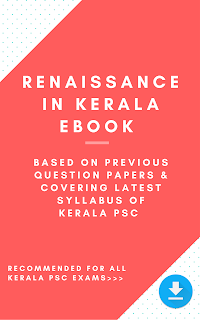Mithavadi newspaper was established by T. Sivashankar who was a merchant in Thalasseri. It got its name when Gopal Krishna Ghokale announced nation rulers as terrorists at the Congress session in 1905. In 1906, Mithavadi newspaper was published under the leadership of
Moorkothu Kumaran from Thalasseri. Moorkothu Kumaran was the first person who prepared the biography of Sree Narayana guru and laid the first statue of Guru in Kerala."
Veenapoovu", the poem of the famous poet Kumaranasan was first published in Mithavadi newspaper in 1907. In 1913 when Moorkothu Kumaran left the leadership,
C.Krishnan took the complete leadership of the newspaper. And he republished it as a magazine named "Mithavadyarude Vaka" from Kozhikode. After that C Krishnan took charge of the newspaper and came to be known as Mithaavadi Krishnan. Mithavadi is also called as "
Bible of Thiyyas" and "
Bible of the downtrodden". It is the first Malayalam newspaper which gave support to Russian revolution in 1917.
Malayalee
"Malayali social reform" Organisation was formed due to the protest against the government because the employees from Kerala were not considered in governmental jobs. It was formed under the leadership of C. Krishnapillai and P. Thaanupillai. Later it came to be known as ''Malayali Sabha''. ''Malayalee'' was the mouthpiece (which means "Mukhapathram" in Malayalam) of the Sabha. "Malayalee" was the
first regional news paper in Kerala. The first issue of the ''Malayalee'' was published in Thiruvananthapuram in 1886. Most of the writings in the newspaper was by
C.V. Raman Pillai. After that, he takes the ownership of the newspaper. The
Malayali memorial that formed in 1891 was promoted by "Malayalee" newspaper. A slogan was formed as a part of this memorial called "Travancore for Travancorians" become famous through this newspaper.
Swadeshabhimani Ramakrishna Pillai wrote his writings firstly in "Malayalee" through his pen name '
Keralan'. This increased the promotion of "Malayalee" newspaper among Keralites. When the publishing was shifted from Thiruvananthapuram to Changanassery "Malayalee" was published only for a few days.
Vivekodayam
"Vivekodayam" was started as a
mouthpiece of SNDP Yogam. It was published on
1904 from Thiruvananthapuram. "
Kumaranashan", who was the secretary of SNDP was the editor of Vivekodayam and given its name as a token of respect to Swami Vivekananda. He took charge as the editor of the newspaper only after
M Govindan. The main topics discussed were, ' tradition about forefathers and ancient families', 'biographies of legends in the society' etc. The involvement of Vivekodayam in encouraging low cast people were really appreciable. Vivekodayam was known as "
Ezhava Gazette". Kumaaranashan criticized Vallathol's "Chithrayogam'', Ulloor's ''Umakeralam''and Panthalam Kerala Varma's ''Rugmamgathacharitham''in Vivekodayam. Aashan argued that these works are done by the influence of the Sanskrit works.
Deepika
Nasrani Deepika newspaper was published on 1887 April in Mannanam in Kottayam under the editorship of
Nidheerikkal Mani Kathanar. The main aim of this newspaper is for the social and cultural upliftment of Christians. However, they also addressed the social and political challenges faced by the people of Travancore. Nasrani Deepika was changed to a daily newspaper in 1927. Publishing of Nasrani Deepika newspaper shifted from Mananam to Kottayam in 1938 and it is renamed simply as "Deepika". Deepika is the
oldest newspaper that is circulating in Kerala. It is the first newspaper in Kerala that started
internet edition.
Swadeshabhimani
Vakkom Abdul Khader Moulavi was the founder of this newspaper. It was started in 19th January 1905 from Anjuthengu.
C P Govindapilla was the first editor of Swadeshabhimani. But the publishing was shifted to Vakkom under the editorship of
K Ramakrishnapilla in 1906. In 1907, press and the paper were shifted to Thiruvananthapuram. Swadeshabhimani newspaper criticized the British empire. The newspaper under the leadership of K Ramakrishnapilla stood for democracy and human rights. His brave and valuable contribution to this newspaper made him popular and was known to be
Swadeshabhimani Ramakrishna Pillai. On the other hand, the newspaper badly criticized the
Diwan of Travancore P Rajagopalachari and ultimately led to the ban of Swadeshabhimani. Moreover, K Ramakrishnapilla was exiled to Thirunelveli. Swadeshabhimani was the first newspaper from India which had a connection with popular British broadcasting agency known as Reuters.
Samadarshi
Samadarshi newspaper was started under the leadership of Kulakkunnath Ramamenon in 1918.
Kunnath Janardhanamenon was the first editor of Samadarshi. It was started in the form of a weekly magazine. Samardarshi strongly criticized the political upheavals during its period. In 1922,
A Balakrishnapilla took charge as the editor. A Balakrishnapilla was popularly known as
Kesari Balakrishnapilla. Samarshi newspaper gave strong support to
Vaikkom Satyagraha. E M Watts, Travancore Diwan tried to suppress this newspaper and introduced a newspaper law known as 5th regulation. All these events forced A Balakrishnapilla to quit the editorship of Samadarshi.
Al Ameen
This newspaper was started in October 1924 by
Muhammed Abdul Khader who is popularly known as
Kerala Subhash Chandra Boss. The publishing of Al Ameen newspaper started from Kozhikode. Al Ameen is an Arabic word which means faithful person. This newspaper not only strengthened the national freedom movement but also enlightened the Muslim community in terms of nationalism. However, Al Ameen faced criticism from both orthodox Muslim community and government as well. In 1930, an editorial titled "Congressum Yudhavum" against the war ideas of Britain led to the ban of the newspaper. But after India got independence, the newspaper started re-publishing from Kozhikode with the help of followers of Muhammed Abdul Khader.
Prabhatham
Prabhatham newspaper was the
mouthpiece of Kerala Committee - Congress Socialist party. It was started as a weekly from Shornur in 1934.
EMS Namboothirippad was the publisher and Ramachandran Nedungadi was the manager of Prabhatham. It was the first socialist newspaper which promoted socialist ideologies and supported the establishment of peasant labor unions and student-teacher associations. The license for publishing this newspaper got banned by Madras government due to an article (poem) written by Chovvara Parameshwaran in relation with the death sentence of Bhagath Singh and his fellow men. However, in 1938, license to restart Prabhatham from Kozhikode was offered. But the newspaper didn't last for long.
Kerala Kaumudi
Kerala Kaumudi was started due to the suppression of Sujananandini newspaper started by Paravoor Kesavanasan. Kaumudi newspaper was first published in 1911 from Mayyanad (Kollam district). C V Kunjiraman and Muloor Padmanabhapanicker were the two main figures behind the start of this newspaper.
C V Kunjiraman was the editor. From 1940 onward, Kerala Kaumudi becomes a daily newspaper which is still circulating in Kerala. Kadhamalika and Navajeevan magazine was also published under the leadership of C V Kunjiraman.
Bhashaposhini
An association named Kavi Samajam was formed under the leadership of
Kandathil Varghese Mappila in Kottayam with Kerala Varma Valiyakoyi Thamburan as the president. This was the first literary association started in Kerala. Later, Kavi Samajam was renamed as Bhashaposhini Sabha and Bhashaposhini magazine became the
mouthpiece of Bhashaposhini Sabha. It was started in 1898 under the leadership of Kandathil Varghese Mappila. "Vidyadhanam Sarvadhanal Pradhanam" was the title of Bhashaposhini magazine.
Mathrubhumi
This newspaper was published from Kozhikode under the leadership of K P Kesava Menon on 18th March 1923. It was introduced to strengthen the activities of the Congress in Kerala and to promote national freedom movement. The main figures behind the start of Mathrubhumi newspaper were K Madhavan Nair, K P Kesava Menon, Kuroor Neelakandan Namboothirippad, K Kelappan etc.
K Madhavan Nair was the first managing director of Mathrubhumi newspaper.
K P Kesava Menon was the first editor of Mathrubhumi and
Kuroor Neelakandan Namboothirippad was the first publisher. In 13th January 1934, Gandhiji visited Mathrubhumi. The newspaper has given a great support to the
freedom struggle and renaissance in Kerala.
Malayala Manorama
It was the newspaper started by Manorama company in Kottayam under the leadership of
Kandathil Varghese Mappila in 1888. The first edition of the newspaper was published on 22nd March 1890. It is the largest circulating newspaper presently in Kerala.
Yukthivadi
This newspaper was started in 1929 from Ernakulam under the leadership of
Sahodaran Ayyappan. Yukthivadi is published from the same printing press of Sahodaran newspaper. It was one of the first atheist or rationalist newspaper in Kerala. It started publishing in 1931 from Iringalakkuda,
M C Joseph being the editor.
Kesari
The man behind Kesari newspaper was
A Balakrishnapilla popularly known as
Kesari Balakrishnapilla. He was one of the great journalists Kerala had ever seen apart from Swadeshabhimani Ramakrishna Pillai. Kesari newspaper started in September 1930 from Thiruvananthapuram. This newspaper was a critic of the rule and politics of Kochi and Travancore kingdom. The famous 'Muppelpu Prasangam' by Sri Chithira Thirunnal Balaramavarma was published as a cover article in Kesari. The newspaper also strongly supported "
Abstention Movement". Apart from political and governance issues, Kesari newspaper also covered topics related to art and literature. It was one of the newspaper which introduced the western literature familiar to people of Kerala.
Note:
- Chengulathu Kunjirama Menon is called as the "father of Malayalam journalism".
- Santishtavadi was the first banned newspaper in Kerala.
Note: This article has only provided you with some introductory facts related to Kerala Renaissance/Kerala History. If you want more detailed and PSC exam oriented Kerala Renaissance contents (including contents in this article in PDF format), you can avail an eBook (click here>>).
This eBook is prepared based on Kerala PSC previous year question papers and covers the complete syllabus of Kerala Renaissance for PSC exams.
Other Useful Links







Excellent work, very helpful to those who are preparing for competitive exams unlike others who are only interested in covering the superficial facts of a topic ...You guys are getting into the core of the topic. .Keep up the good work
ReplyDeleteThanks for the compliment!
DeletePlz post about swaraj newspaper
ReplyDelete